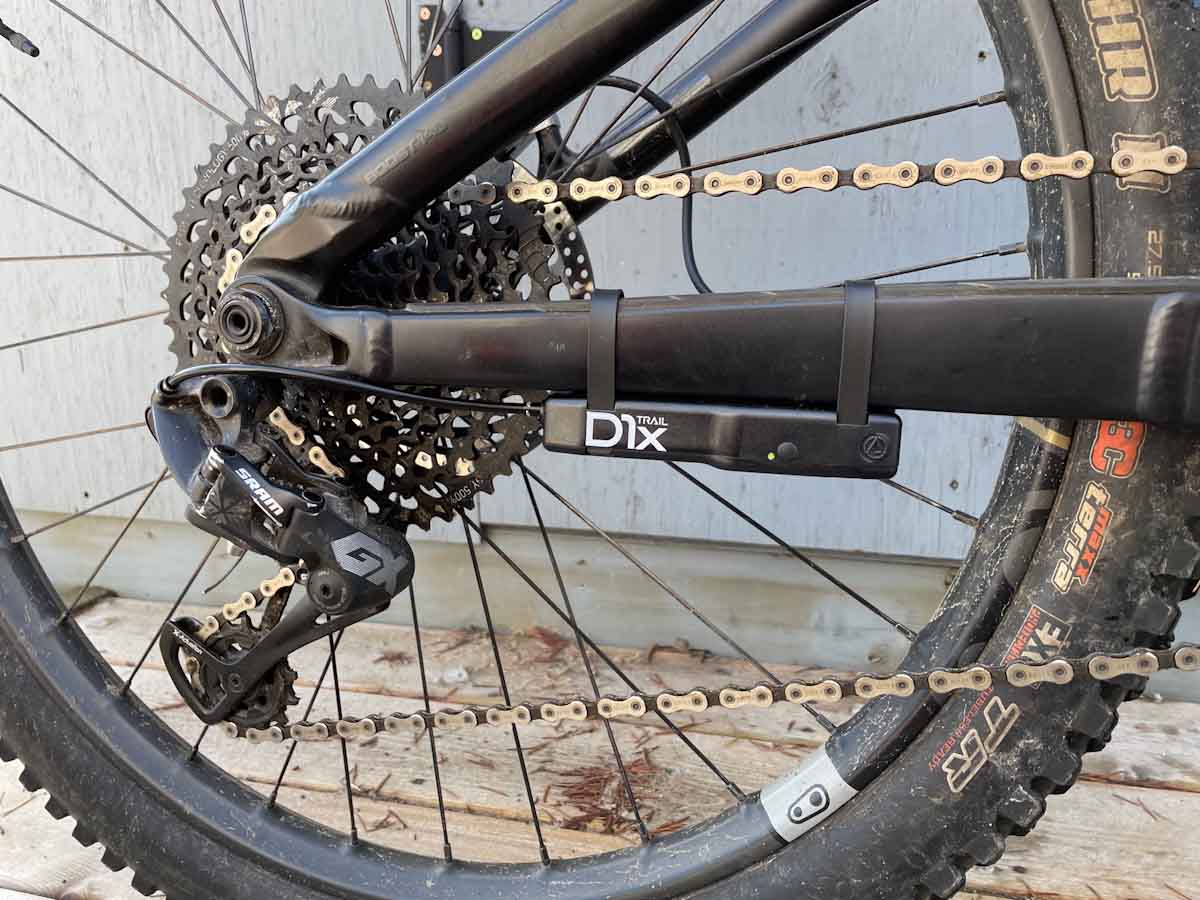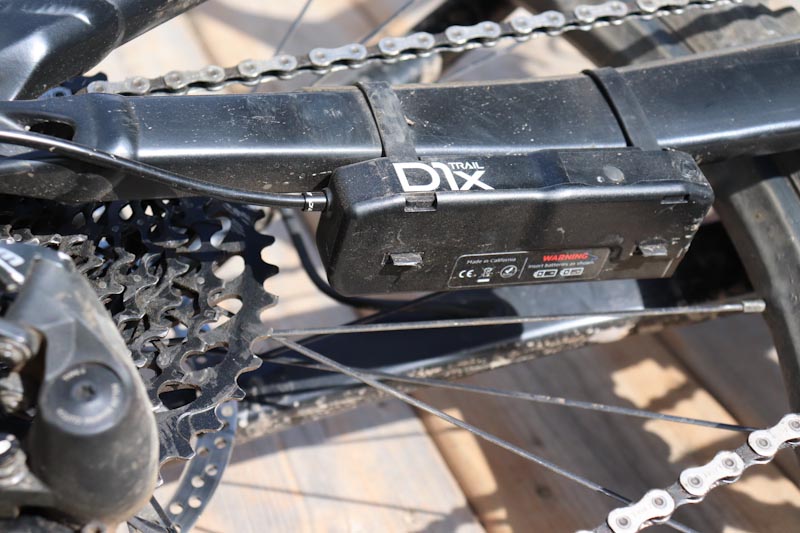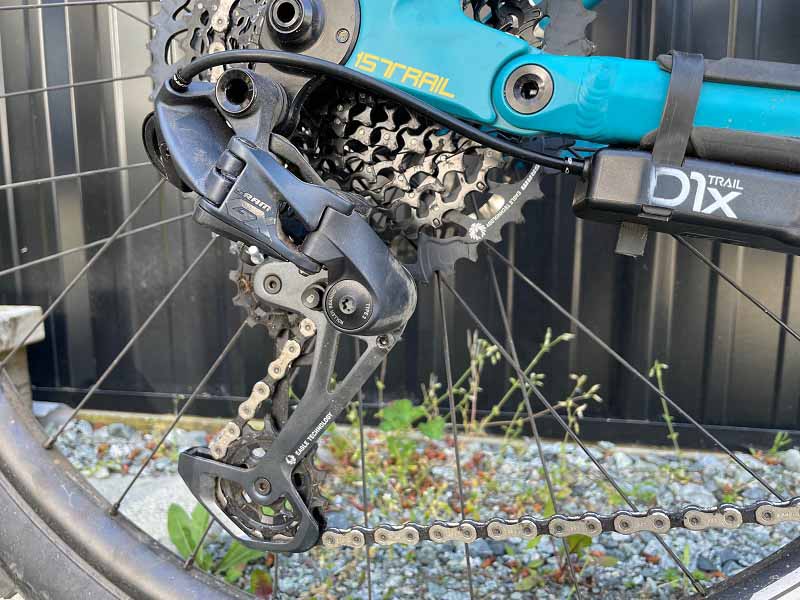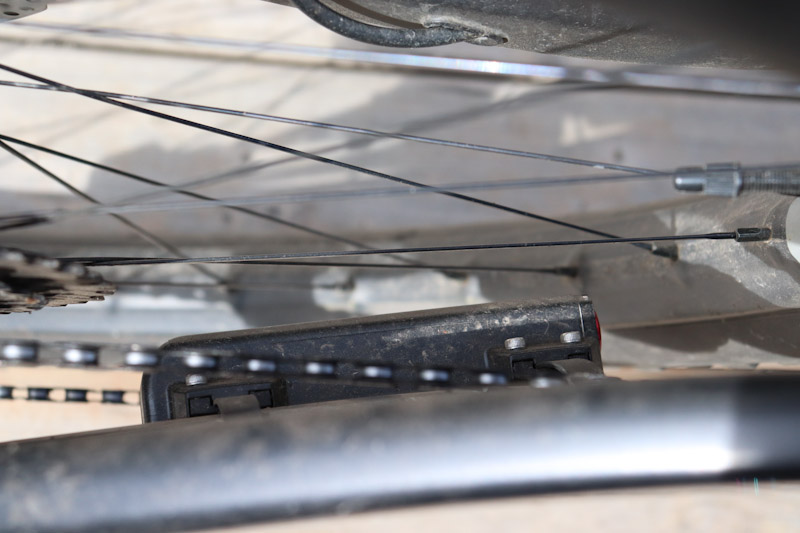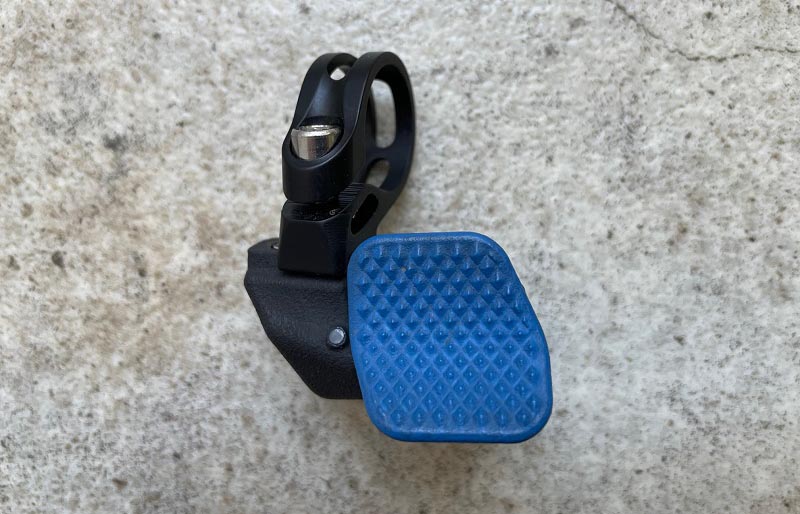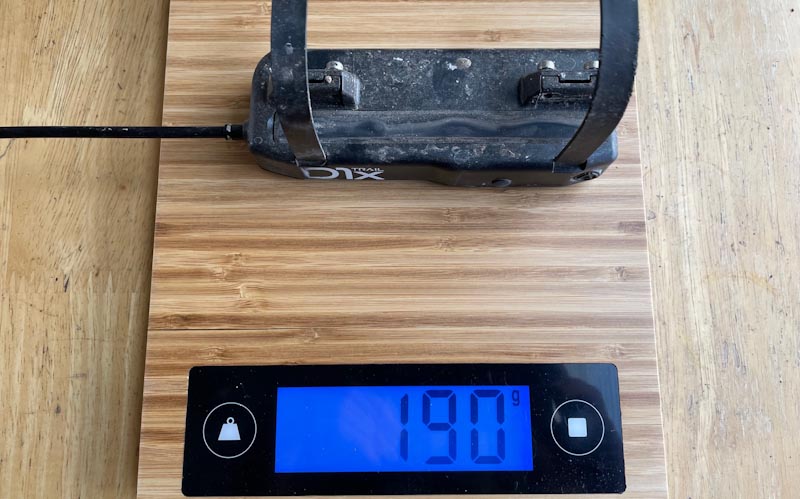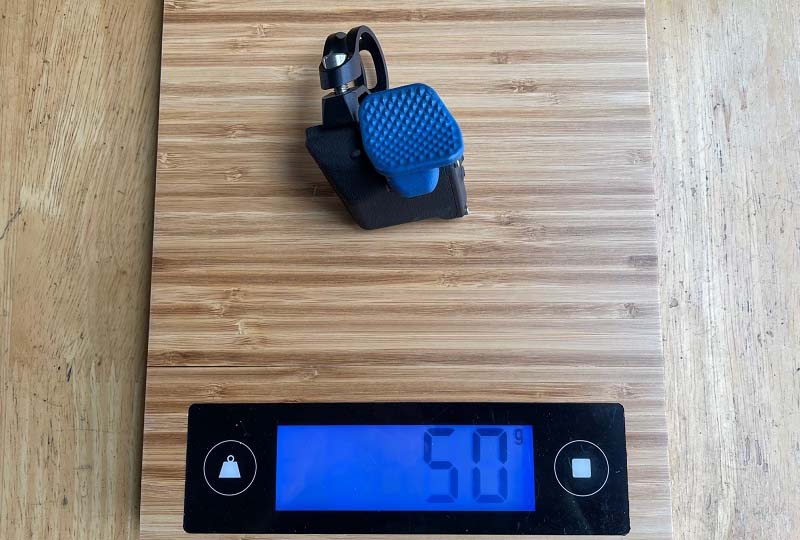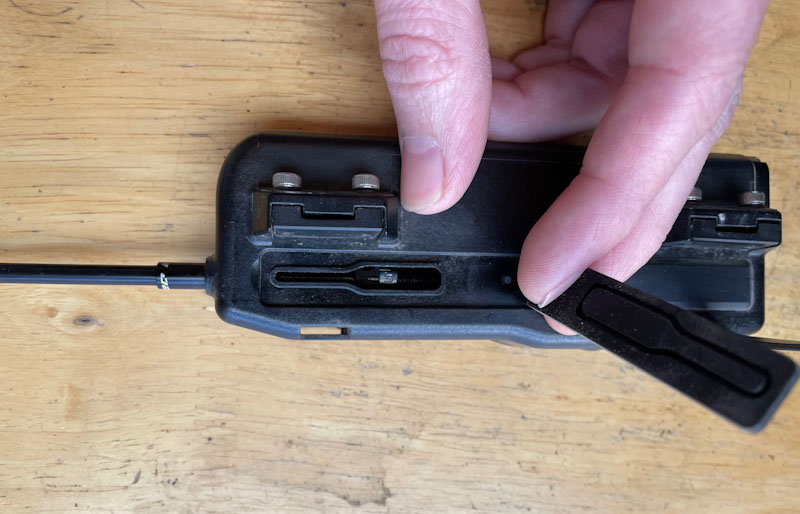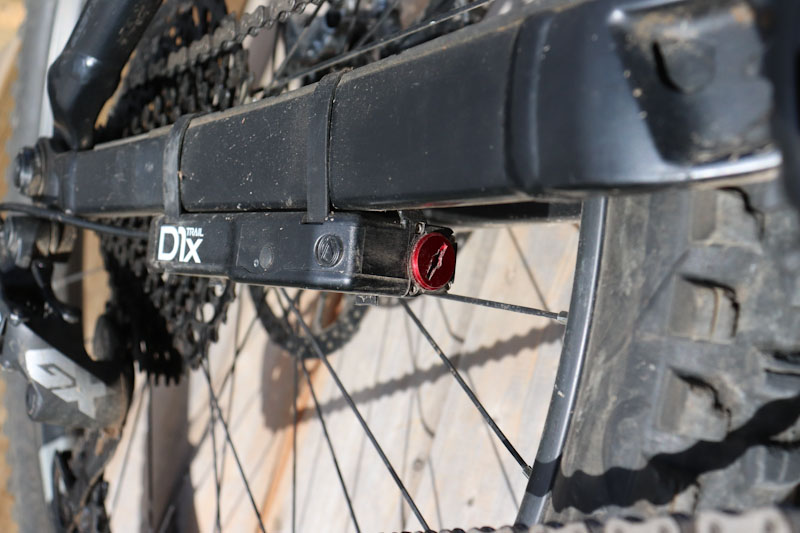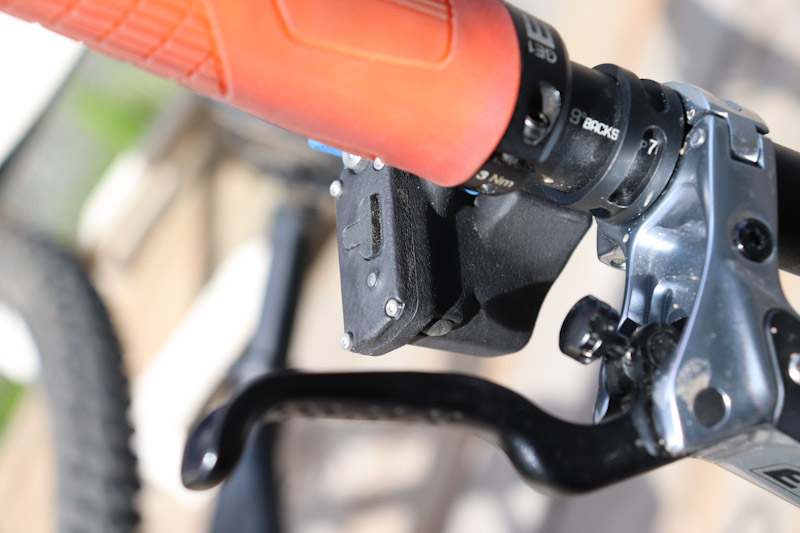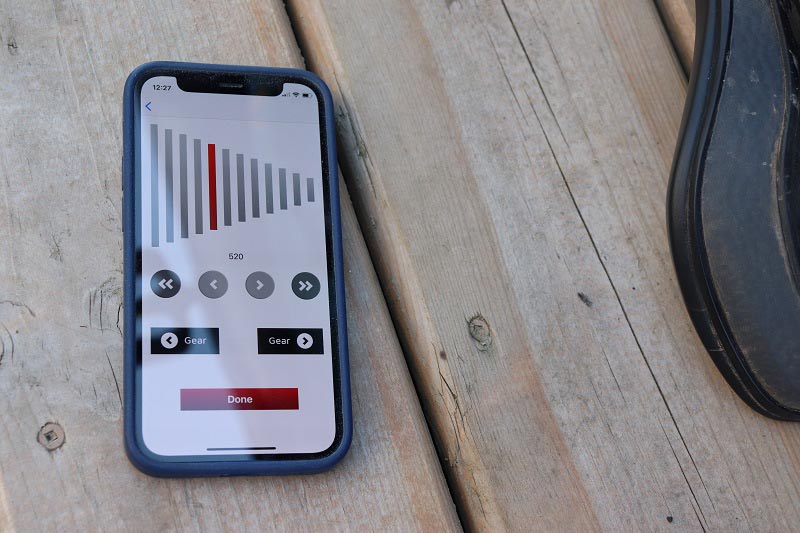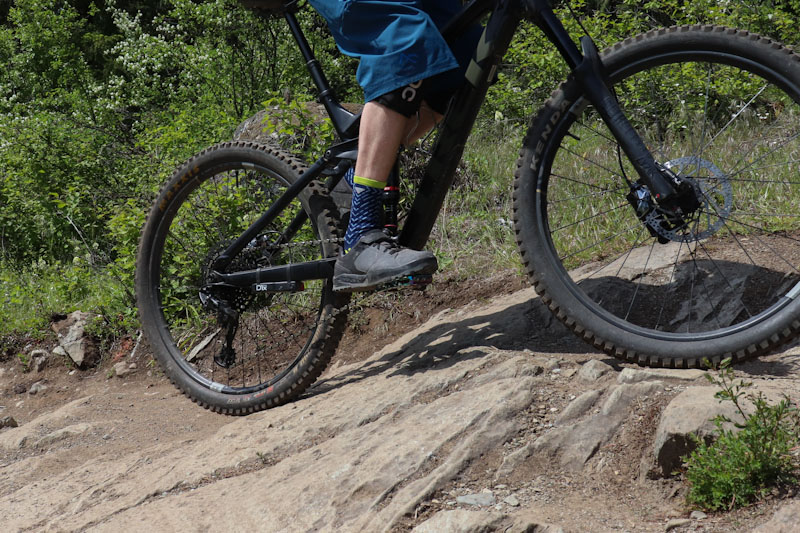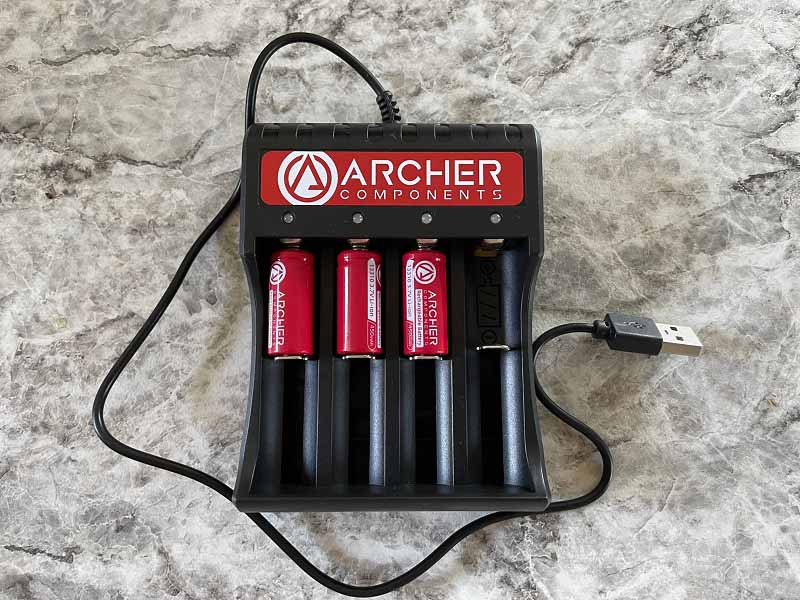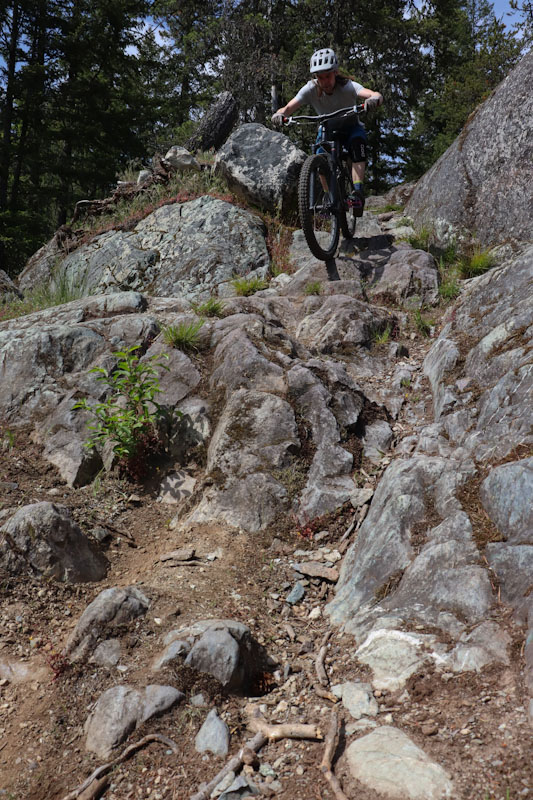Electronic drivetrains aren’t new anymore, but not long ago Archer Components introduced an interesting new concept – an electronic shifting system that uses a short cable to pull your derailleur. It sounds odd, but they’ve devised a way to make any cable-actuated derailleur upgradeable to electronic shifting, and claim their system provides improves shifting performance (along with other benefits).
I met up with the guys from Archer in March, and they showed me how to set up the D1x shifter and their new MTB-friendly Paddle Remote on my bike. I’ve been riding it since then, and I agree there are some performance gains versus my old cable-pulled components… however I have some critiques about the system too.
Archer D1x: Why?
It’s easy to look at this system skeptically and ask “Why go electric if you still rely on a cable?” but it didn’t take the Archer crew long to convince me there are some legitimate advantages like…
Easy setup and adjustment: Imagine tuning your derailleur by pressing buttons on your phone! Of course you still have to get your B-tension and limit screws figured out as always, but beyond that any adjustments are definitely easy with Archer’s system. Also, this system eliminates the hassle of cable routing (particularly for internally routed frames).
On-the-fly adjustment: Yes, with tools on hand you can do this with a normal derailleur, but doing it electronically is fast and easy. Using either your phone or the handlebar remote, you can fine-tune any gear(s) during a trailside stop. The unique benefit of this is, if your derailleur gets a bit tweaked and starts skipping in certain gears, the D1x system can adjust gears individually so you can (potentially at least) correct the poor performance of slightly damaged derailleurs or bent hangers, before making a permanent fix at home.
Compatibility and performance gains: Archer’s system can turn any cable-actuated derailleur into an electronically shifted unit. Furthermore, they say it improves the feel and function of any derailleur, so you can enjoy top-level shifting performance from your mid or even entry-level components. Archer claims their shifter is very reliable once programmed, and shifts faster than a cable setup. At the handlebar, your ‘shifter’ (now a remote) offers push-button action, which requires little effort as you’re not physically pulling a cable.
Cost: Of course I mean ‘cost versus going fully electronic’ as Archer’s system is considerably cheaper than a complete AXS or Di2 system. Also, destroying your Archer-actuated non-electric derailleur is going to be a lot less expensive than replacing an electronic model.
App functions: The Archer app collects ride data and can tell you how many times you’ve shifted gears and how far you’ve ridden (since it’s last reset). It also allows you to reverse the shift paddle if desired, enables you to set a ‘Get Me Home Gear’, and more.
Adaptability: Archer’s components can be used and customized to help adaptive riders. Pushing a button is easier than throwing a lever, so riders with hand/thumb issues might find the electronic paddle easier to work with. Archer offers right and left-handed remotes, the buttons send simple on/off signals and can be extended with wires if needed, and they’ve had one customer with a hand-cycle 3D print their own enlarged shift buttons that can be slapped with an elbow!
System Components:
The D1x shifter unit straps to your chainstay (or possibly seatstay) just ahead of your cassette. It measures 130mm long, 48mm wide and 24mm deep. It does protrude beyond the chainstay towards your spokes, but Archer says it should not present clearance issues on 99% of bikes.
While Archer is now moving to a rechargeable battery pack, the shifter I tested runs on Archer’s lithium ion rechargeable batteries (not standard rechargeables), and there are two types: Their Sprint batteries provide faster shifting but less life, while the standard batteries last longer but can’t shift gears as quickly.
Before each ride you have to switch the shifter unit and remote on, but both shut off automatically after no motion is detected for a specified span of time (you can select 5, 15 or 30 minutes, or choose to use the shifter’s power button). I was told the shifter doesn’t use much power unless it’s shifting, so I opted for 30 minutes to prevent shut-offs during a trailside break.
I’m testing the new Paddle Remote, which was designed to offer MTB riders a more familiar feel versus Archer’s original DBR remote (which featured two small buttons). Archer now has three different remotes available; the DBR, the Paddle, and the MFR Drop Bar remote. The Paddle Remote offers nine different paddle color options.
The system includes a battery charger for the shifter unit batteries, while you’ll need a micro USB cable (not included) to charge the handlebar remote’s internal battery.
Archer claims their system only adds about 25g to your bike, but my scale showed a bit more of a difference. Archer’s shifter unit (with batteries and the cable/housing) weighs 190g, and the remote weighs 50g. The SRAM GX shifter, cable and housing I removed from my bike weighed 181g, so I gained 59g. That’s more than claimed, but still a very small weight sacrifice.
Installation and Setup:
The D1x shifter simply straps to your frame, but first you’ll need to insert the cable. A rubber cover on top of the shifter lifts up, and the cable is routed into the actuator and out the backside of the shifter. I will note that the rubber cover was real pain to re-install, taking a few minutes of finger-wrestling to get it properly re-seated.
Accessing the bolts that tighten the shifter’s straps could be a bit tricky with your rear wheel on, but wasn’t too difficult in my case. Positioning the shifter isn’t hard; It should be placed wherever it allows ample spoke clearance, which in most cases will be just in front of the cassette on the bottom of the chainstay (on some frames the seatstay may work better). Once the shifter unit is placed, cut your housing just long enough to leave a slight bend and slide the cable through.
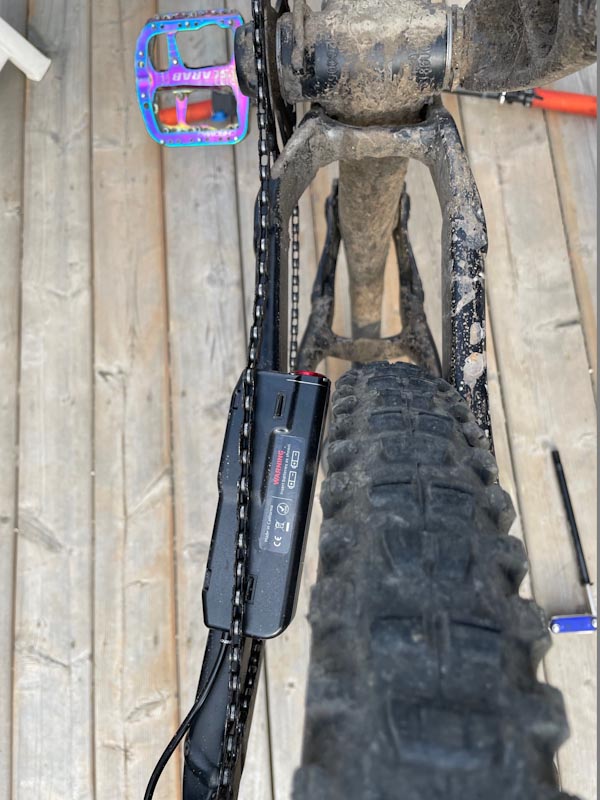
I was happy to find that my 2.5” tire just fit around the D1x shifter in my Trek Remedy’s rear end, so removing my rear wheel was no problem at all. Of course this all depends on your frame and tire choices, but I’d bet most bikes won’t present a problem.
I also changed the shifter’s batteries without removing the wheel, and that proved pretty easy too. Accessing the battery door with my multi-tool was no problem. The batteries fell out of the shifter with a one-handed shake of my bike’s rear end, and my other hand was free to grab them as they came out.
The remote clamps on just like any other shifter, but you can save the hassle of routing a cable (especially internally) to the handlebars. I had no issue getting the compact remote into a position I liked with my TRP DH-R Evo brakes.
Adjusting shift increments is definitely easy with Archer’s D1x system. To start, you pinch the cable hand-tight in the derailleur just as you would with a normal cable setup. However, from there indexing the gears is just a matter of spinning the cranks and pushing buttons on your phone.
First you tell the app how many gears your cassette has. Then you snug up the cable with a few taps of the left double arrow button (which moves the derailleur inward) and start running through the gears. With one hand spinning your crank, you simply push the left double arrow button until the derailleur shifts cogs. Once you’re sitting nicely in a gear, you tap the left ‘Gear’ button on the app screen and repeat the procedure through the cassette. If fine-tuning is needed for any gear, there are two arrow buttons for each direction, a single and a double arrow: The double arrow buttons move the derailleur by 1mm, while the single arrow buttons move it by 0.25mm. Once you’re happy with your indexing, tap the ‘Done’ button and you’re ready to ride.
The only extra step you’ll want to take right away is setting the ‘Get Me Home Gear’ with the app. Simply choose any cog you like, and if your batteries die the shifter will use their last bit of juice to shift into that gear. This at least leaves you with a manageable single-speed bike instead of sticking you in a really high or low gear far from home.
Ride Impressions:
I started testing the Archer D1x system in late March. On my initial setup, I purposely wasn’t super picky about fine-tuning. I simply ran through the gears a few times, and as soon as they all seemed to be shifting properly I started riding. My first few rides were great, with no missed shifts or odd surprises. About six or seven rides in, I did experience two rough and sudden shifts after some bumpy, rocky descending… I’m not sure what caused this, as it didn’t prove to be an ongoing issue.
Even with the system performing well (and no need to re-adjust for the very short housing’s compression or end cap settling), I decided after several rides to run through the gear indexing again, and noticed one issue this time. When you’re indexing the derailleur (via the app) you have to do so by spinning the crank by hand, with your bike in a stand or flipped over. This time my gears seemed to be set up perfectly, but after getting on the bike and putting some force on the pedals I found the 9th-11th gears were a bit off. This issue can be corrected by using the remote’s micro-adjust function as you pedal around, but this means you’ll have to master both the app and remote indexing procedures to take full advantage of this system.
Using the remote’s micro-adjust function to fine-tune the gears that weren’t happy under pedalling forces was fairly easy. The remote’s indicator LED is small, but I could see the colors and blinks just fine. A one-second push of the power button puts the remote into micro-adjust mode, then the up/down paddles move the derailleur inwards or outwards. Once you’ve adjusted a gear, you can either push the power button again or simply wait seven seconds and that gear’s indexing will reset. As long as you can remember what buttons to push and what the LED is indicating, it is easy to perform micro-adjustments with the remote at home or mid-ride. One thing I like about the remote’s micro-adjust function is it means you don’t have to carry your phone while you ride.

Archer claims their shifter shifts faster than a cable setup, and I would agree with that 50%. Shifting is definitely faster when moving up the cassette into larger cogs. I’d partly attribute this to the half-second you save from your thumb not having to throw a lever, but the shifter unit definitely pulls the cable quickly (remember I am using the Sprint batteries, which offer faster action than the standard option). However, I’ve found shifting down the cassette isn’t any faster than hitting the release paddle on a normal shifter.
So what about double shifts or dumping multiple gears? The Paddle Remote will normally only change one gear at a time, but after trying some double taps and rapidly dumping three to four gears, I’d say Archer’s shifter will do it just as fast as a cable setup. Giving the remote a few taps is easy to get used to, and the shifter responds with no delay. There is a ‘Quick Shift’ app function that allows you to skip multiple gears at once (enacted by a longer press of the paddle) but I was happy enough with tapping the paddle as needed.
Archer also says their system improves shifting under load, and I would agree. Right away I tried several shifts under reasonable degrees of load, and indeed found the system handled it well. Its fast action seems to help, and the shift mechanism has a strong enough pull to tug your derailleur through a tight chain. I pushed it harder and found the point where it struggles, so you can’t be reckless about shifting but I will say the D1x system reliably handles more load than my cable-driven GX derailleur and shifter.
The Sprint batteries’ life is as promised or better: I’ve ridden at least the estimated 25 hours on a charge, and only recharged the remote’s internal battery once so far. I have also ridden at least an hour and a half with the shifter’s battery indicator showing solid red (15% power or less) and I got home before it died.
As for weather resistance my shifter has definitely taken some splashes and mud spray, but I somehow never got the chance to soak it in a heavy rainfall. I did hear a professional racer who was testing the system ran it through a very sloppy enduro race, and power-washed his bike multiple times without damaging anything.
On my very first descent I noticed my chain slapping the shifter unit, but after more than three months of riding my shifter is only showing some slight scratches on the underside. Chain slap didn’t prove to be a regular annoyance either, it only happened on really rough descents when the chain was bouncing hard.
One of the nicest things about the Archer D1x system is the feel and action of the Paddle Remote. Simply put, pushing a button requires less motion and effort than throwing a cable with a paddle, and I really like the push-button action… but mostly when shifting into larger cogs. I find the lower paddle very comfortable to access with my thumb, but there is a slight sacrifice going the other way.
To hit the upper paddle, your thumb has to move more rearward than it would with a traditional trigger shifter. On two occasions while upshifting, I accidentally hit the lower paddle while my thumb was moving back to my grip, putting me back into the gear I just came from. This was really a matter of getting used to the remote, and didn’t prove to be an ongoing issue. However, it made me realize that the upper paddle requires more thumb motion than I’d like. That said, I’m still pretty happy with the overall feel of the remote.
Downsides:
The only technical problem I had with Archer’s system was with the battery charger, but since Archer is moving to a battery pack this will hopefully not be a problem for future buyers. I found the charger does not hold the Sprint batteries tightly, and the LED’s that indicate charging status were not reliable. I had batteries appearing to never fully charge, fully charged batteries indicating they needed more juice, and noticed some of the LED’s would randomly light up red or green as I swapped the batteries around. Archer assured me the Sprint batteries won’t accept too much charge, but I’m not impressed with the unreliable status LED’s on the charger.
Charging the remote always worked fine, but presents one small inconvenience: I don’t have a USB connection or the ability to run an extension cord where my bikes are stored, so I have to remove and re-position the handlebar remote every time I need to charge it. You could also use an external battery pack with a longer charging cable to charge it away from outlets, but that’s an additional cost and something to consider before purchase. Fortunately, the battery lasts quite a while.
Aside from the charger issues, the biggest downside to Archer’s system is the cost (versus sticking with a cable). The setup I tested sells for $449, and not every rider can spare hundreds for bike upgrades, even if they do improve your ride. I would recommend bucking up for the Sprint batteries (until Archer switches to their battery pack) to ensure fast shifting, which is one of the system’s main benefits. While it’s not a must if you’re careful with your battery life, carrying an extra set of batteries is a good idea. A spare set of Sprint batteries costs $39.99.
While I had no issues with the D1x system’s functionality, there’s always an outside chance any component could fail during a ride. Should you have a communication issue, or an internal failure in the shifter, you won’t be able to fix it on the trailside. Also, Archer’s system does not eliminate the possibility of snapping a shift cable, and replacing one involves removing the shifter unit.
I wish the power button on the shifter offered a more positive click, it’s pretty small and you have to push it firmly and feel for the click. You’ll know the unit has turned on thanks to the LED indicator (which you should be watching to check battery life), but I think this button could be improved upon.
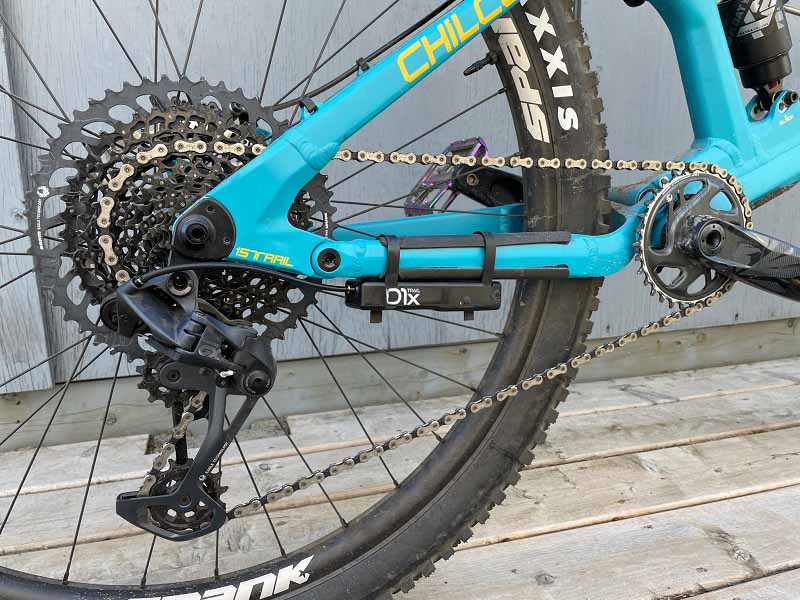
So is this mostly electronic shifting system worthy of consideration? I do agree that the D1x shifts faster than a cable setup, but only in one direction (into larger, easier gears). I also like the easy push-button action of the remote, but while the lower paddle is ergonomically great, the upper paddle is less comfortable to use than a typical trigger shifter release paddle. The D1x shifter handles a little more load than a cable setup, but it won’t allow you to haphazardly shift whenever you want. I found tuning with the app easier than adjusting cables, and the very slight weight gain was negligible in my eyes.
All in all the Archer D1x system offers some noticeable performance gains, but isn’t a game-changing upgrade in terms of shifting. I think this system would appeal most to gadget-minded riders who have a few bucks to spend, like the idea of push-button shifting, and the ease of tuning gears with a smartphone. I will say that I’m impressed enough with the D1x’s upsides that I’ve happily moved the system onto my new trail bike, with plans for continued use.
